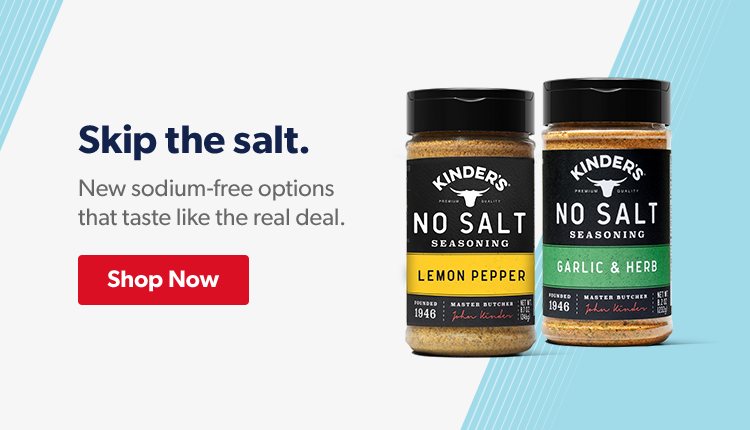
Vegans should eat plenty of fruits and vegetables to ensure a balanced diet. They can also consume hemp milk, coconut milk, and other dairy products. Chia seed is a great source for protein. These healthy foods can also be used in many recipes. You can also substitute dairy for bananas if you want ice cream.
Vitamins and minerals are abundant in fruits and vegetables.
Vegetables and fruits are a great source of vitamins and minerals, especially those that are rich in vitamin C. They also contain fiber and other important nutrients. Regularly consuming fruits and vegetables can help reduce diabetes and improve your general health.
Vegans can get vitamins and minerals from vegetables and fruits. They also contain the essential mineral iodine for thyroid function. You can find iodine in legumes and carrots. Whole grains and cereals can also provide iodine.
Coconut milk
Coconut milk is a good alternative to milk. While it's high in calories and fat (and especially saturated fat), it is delicious and has many health benefits for vegans. This creamy dairy is popular in Asian and Southeast Asian cooking. If you're trying to cut down on sugar, coconut milk is a good choice.

You can easily find organic coconut milk and make your own in just a few minutes. Organic products without additives are the best way to find the right type. Avoid coconut milk from stores, which could contain BPA or other harmful chemicals.
Hemp milk
Hempmilk is a delicious, dairy-free substitute for milk. It is made by soaking hemp seed in water for at least two hours, or even overnight. You can add it to your favorite recipes. It has a more nutty taste than regular milk. You can use hemp milk for baking or desserts.
Hemp milk is available in many varieties and flavors. Hemp milk can be purchased with vitamin D and calcium fortification. You can also add natural sweeteners to it.
Chia seeds are an excellent source of protein
Chia seeds are a source of protein and fiber for vegans. They are full of antioxidants that help prevent aging and disease. They are high in fiber, which promotes fullness. They can also improve the health of your gut and decrease the risk of developing colon cancer. They are also a good source phosphorus, magnesium and potassium.
Chia seeds have almost 2g protein per tablespoon, making them a good choice for vegans or plant-based eaters. They can be used in baked goods, smoothies, or as a replacement for vegan protein. They are hydrophilic and expand when they are immersed in water. They are also high in polyunsaturated oils, B vitamins, calcium, and other nutrients. They can also substitute for eggs and be gluten-free.

Weetabix
Weetabix is a whole grain cereal made from whole grain wheat. It contains less than a quarter of the calories and fat found in traditional wheat products. It has moderate processing and a low carbon and water footprint. The ingredients list is lengthy and includes whole grains such as oats and rice flour.
Weetabix has 3.8g of fiber per serving and is low in calories. It is low in saturated fat and contains 0.3g per serving. This makes it a great choice for anyone who wants to lose weight. You can also add some fruit or some extra yogurt to boost your Weetabix's nutritional value. It is high on fibre and also contains additional vitamins and minerals like iron, B vitamins, etc. You can also top it with dairy to increase its calcium level.
FAQ
Exercise: Good for immunity or not?
Your immune system is strengthened by exercise. Exercise increases white blood cell production, which helps fight off infection. You also eliminate toxins. Exercise can prevent heart disease, cancer, and other diseases. Exercise also helps to reduce stress levels.
However, exercising too much can weaken your immune system. If you work out too hard, your muscles become sore. This can cause inflammation and swelling. To fight infection, your body will produce more antibodies. Problem is, extra antibodies can trigger allergies and other autoimmune conditions.
So, don't overdo it!
Do I need calories to count?
You may wonder, "What diet is best for you?" or "is counting calories necessary?" The answer to this question depends on many factors, including your current health, your personal goals and preferences, as well as your overall lifestyle.
The Best Diet For Me - Which One Is Right For You?
The best diet depends on me, my health, my goals, my lifestyle, and my preferences. There are many diets available, some good and others not so good. Some diets work well for some people and others do not. What should I do then? What can I do to make the right decision?
These are the questions that this article attempts to answer. This article begins with a brief overview of the various types of diets that are available today. Then, the pros and cons of each type of diet are discussed. Finally, we'll look into how to choose the best one for you.
Let's start by taking a look at the various types of diets.
Diet Types
There are three types, low-fat, high-protein, or ketogenic diets. Let's look at each one briefly.
Low Fat Diets
A low-fat diet is one that limits the intake of fats. This is achieved through a reduction in saturated fats (butter or cream cheese), etc. They should be replaced by unsaturated oil (olive oils, avocados, etc.). Low fat diets are often recommended to those who wish to lose weight quickly. This kind of diet could cause constipation or heartburn and other digestive problems. If a person doesn’t receive enough vitamins from their foods, this can lead to vitamin deficiency.
High Protein Diets
High protein diets are known to restrict carbohydrate intake and promote the consumption of protein. These diets typically have more protein than other diets. These diets are designed to build muscle mass and help you burn more calories. One problem is that they may not provide adequate nutrition to someone who needs it. They are not suitable for all people because they can be restrictive.
Ketogenic Diets
These diets are also known under the name keto diets. They are high fat and moderately carbohydrate and protein-rich. They are commonly used by athletes and bodybuilders as they allow them to train harder, longer and without feeling fatigued. They do require strict compliance to avoid any side effects like fatigue, headaches, nausea, and headaches.
Get immune enhancement with herbs and supplements
It is possible to boost immune function by using herbs and natural remedies. Examples include ginger, garlic and oregano, echinacea, vitamin C, ginkgo Biloba, and echinacea.
These herbal remedies shouldn't be used to replace traditional medical treatment. They could cause side effects like nausea, dizziness or stomach cramps, dizziness as well as allergic reactions.
What should my weight be for my age and height? BMI calculator & chart
Calculating your body mass index (BMI), is the best method to calculate how much weight to lose. The healthy BMI range for a healthy person is 18.5 to 24.9. Aim to lose 10 pounds per month if your goal is to lose weight. To calculate your BMI, simply enter your height and weight into the BMI calculator.
Check out this BMI chart to determine if you are overweight or obese.
Statistics
- nutrients.[17]X Research sourceWhole grains to try include: 100% whole wheat pasta and bread, brown rice, whole grain oats, farro, millet, quinoa, and barley. (wikihow.com)
- According to the 2020 Dietary Guidelines for Americans, a balanced diet high in fruits and vegetables, lean protein, low-fat dairy and whole grains is needed for optimal energy. (mayoclinichealthsystem.org)
- This article received 11 testimonials and 86% of readers who voted found it helpful, earning it our reader-approved status. (wikihow.com)
- The Dietary Guidelines for Americans recommend keeping added sugar intake below 10% of your daily calorie intake, while the World Health Organization recommends slashing added sugars to 5% or less of your daily calories for optimal health (59Trusted (healthline.com)
External Links
How To
What does the "vitamin") mean?
Vitamins are organic substances found naturally in food. Vitamins help us absorb nutrients from foods we eat. Vitamins cannot be made by the body; they must be taken from food.
There are two types if vitamins: water soluble, and fat soluble. Water soluble vitamins dissolve easily in water. Examples include vitamin C,B1 (thiamine), B2 (riboflavin), B3 (niacin), B6 (pyridoxine), folic acid, biotin, pantothenic acid, and choline. The liver and fat soluble vitamins are stored in fatty tissue. You can find vitamin D, E K, A and beta carotene as examples.
Vitamins can be classified by their biological activity. There are eight major vitamin groups:
-
A - Essential for healthy growth and health maintenance.
-
C – essential for proper nerve function.
-
D - essential for healthy teeth and bones.
-
E is needed for good reproduction and vision.
-
K - Required for healthy nerves and muscles.
-
P – Vital for building strong bones.
-
Q - aids digestion and absorption of iron.
-
R - Required for red blood cell production
The recommended daily allowance (RDA), for vitamins, varies based on gender, age, and physical condition. The U.S. Food and Drug Administration, (FDA), sets the RDA value.
For adults aged 19 and older, the RDA for vitamin B is 400 micrograms daily. For fetal development, pregnant women require 600 micrograms per daily. Children ages 1-8 require 900 micrograms per day. For infants younger than one year, 700 micrograms are required daily. However, this number drops to 500 micrograms each day for children aged 9-12 months.
Children between the ages of 1-18 need 800 micrograms per daily for obesity, while those overweight require 1000 micrograms. To meet their nutritional needs, children underweight and obese need 1200micrograms.
Children ages 4-8 years who have been diagnosed with anemia need 2200 micrograms per day of vitamin C.
2000 micrograms is the minimum daily intake for general health in adults older than 50 years. Mothers who are pregnant, nursing, or have a high nutrient need will require 3000 micrograms a day.
1500 micrograms are required daily by adults over 70 because they lose approximately 10% of their muscle each decade.
Women who are pregnant, nursing or breastfeeding need more than the RDA. Pregnant woman need 4000 micrograms daily in pregnancy and 2500 per day after childbirth. Breastfeeding mothers need 5000 mg per day when breastmilk is being produced.